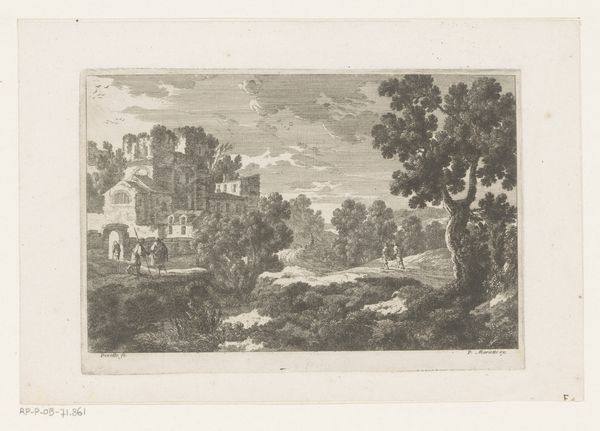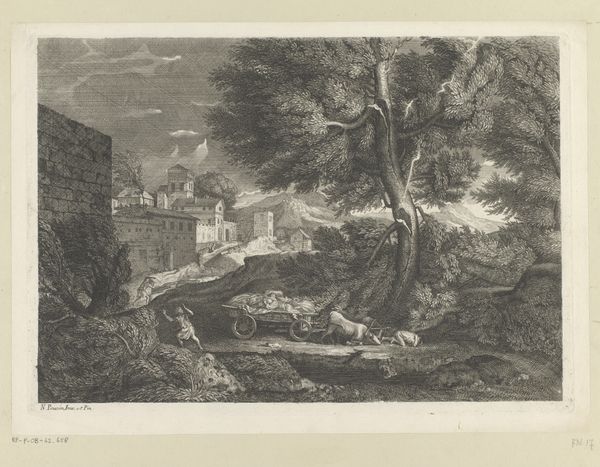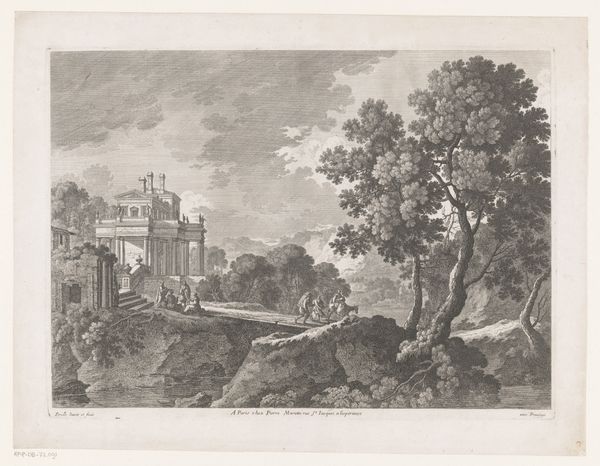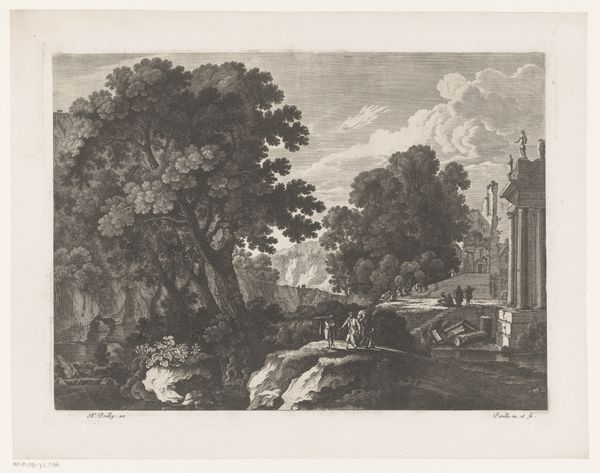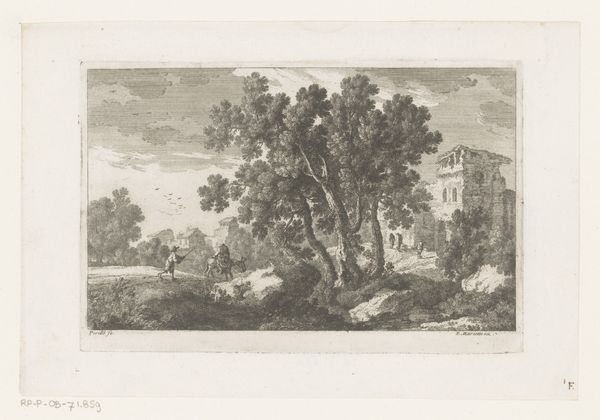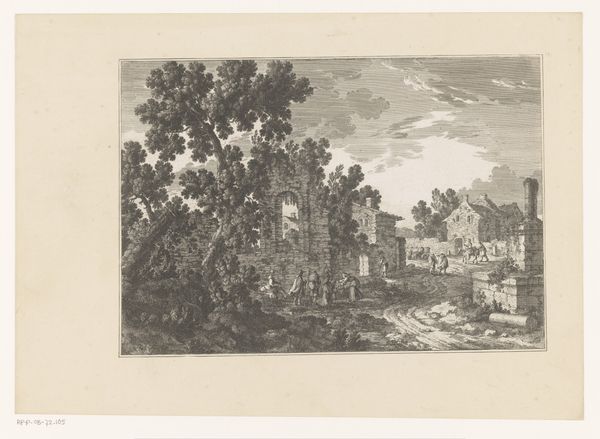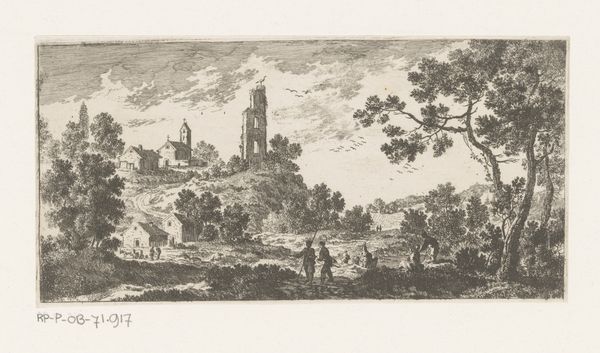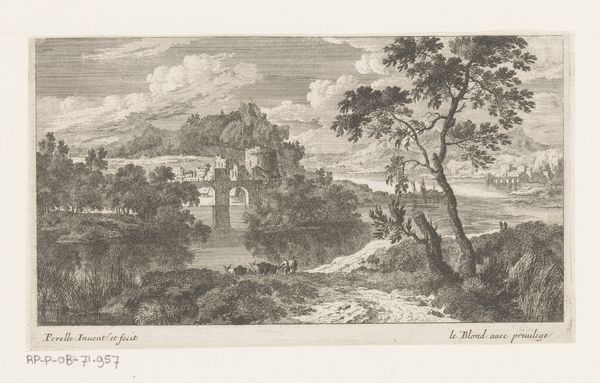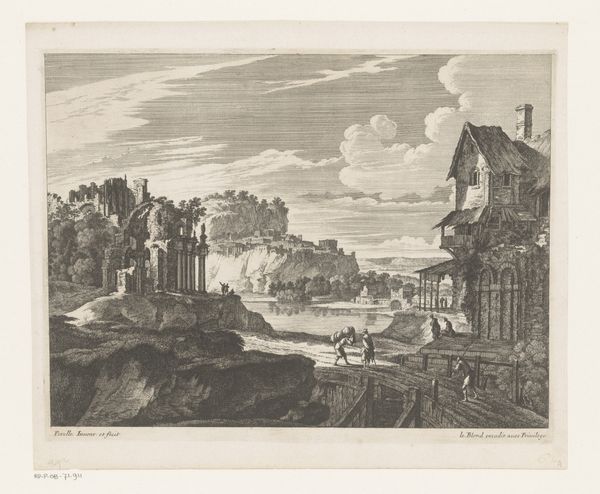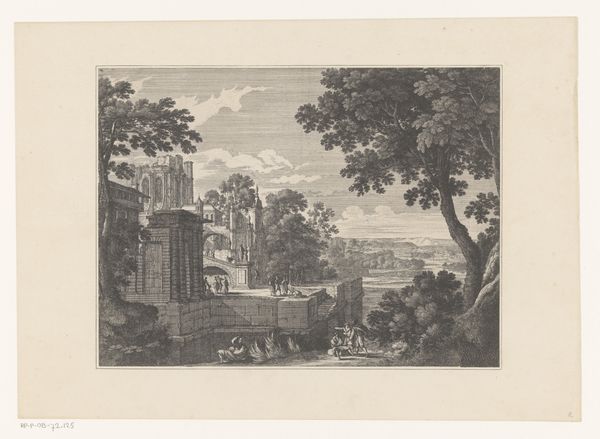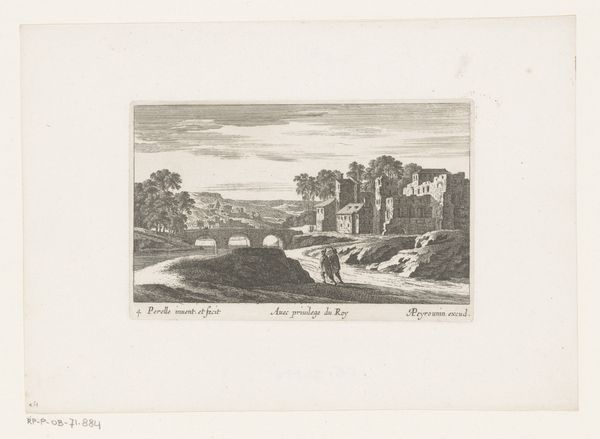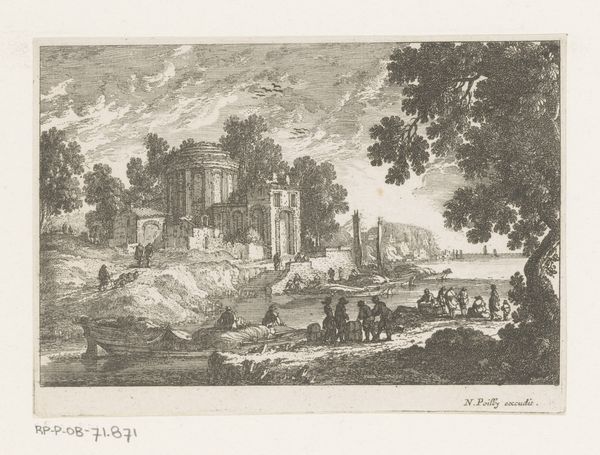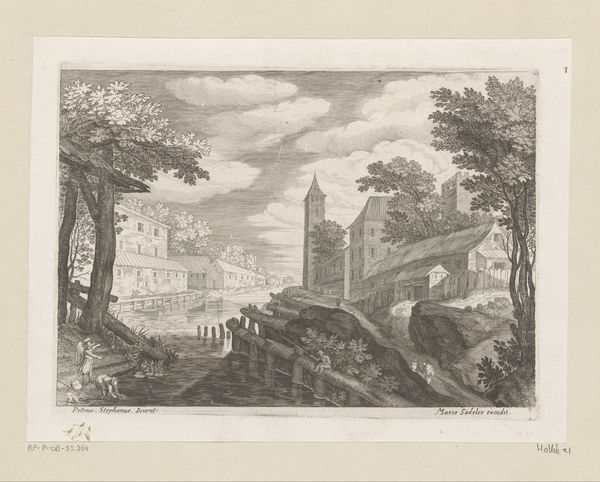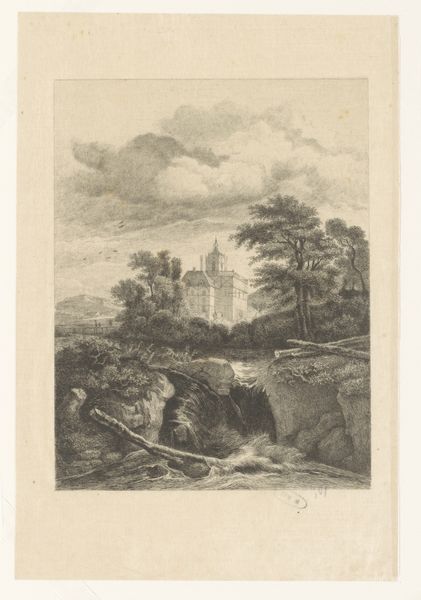
etching
#
baroque
#
etching
#
landscape
#
cityscape
Dimensions: height 100 mm, width 210 mm
Copyright: Rijks Museum: Open Domain
Editor: So, this etching by Nicolas Perelle, *Landscape with Ruins by the Sea,* from around the late 17th century, has really caught my eye. It feels so serene and yet, there’s this looming sense of history with the ruins. How do you interpret this work, considering Perelle’s use of imagery? Curator: I see a conscious orchestration of memory and time. The crumbling ruins are potent symbols. What do they evoke in you, set against the backdrop of the seemingly timeless sea? Editor: Well, the ruins give a sense of decay and loss, like something grand has faded, but the sea represents continuity, an ongoing cycle. The contrast feels significant. Curator: Precisely. The ruins could represent lost empires or vanished ideologies. Notice how Perelle places them? The juxtaposition is intended. The Baroque period often explored themes of transience and the power of nature to outlast human creation. Editor: That makes a lot of sense. Are there specific visual cues or symbolic elements that reinforce this idea of nature’s enduring power over human constructs? Curator: Consider the way the tree frames the ruin, how its branches reach across, almost reclaiming the stone. Or look at the tiny figures walking along the coast. The image hints at the overwhelming indifference of time, both historical and cyclical. Perelle invites reflection upon the enduring nature of place versus fleeting moments of humankind. Do you see the symbolism playing out even in the texture of the etching itself? Editor: I do! Now that you mention it, the delicate lines representing the sea seem almost eternal, while the lines depicting the ruins are rougher, almost… fragmented. Thanks, seeing it that way makes the whole piece much richer. Curator: It's a layering of symbolism and emotion, designed to resonate through the ages. And hopefully, it still speaks to our experiences today.
Comments
No comments
Be the first to comment and join the conversation on the ultimate creative platform.
